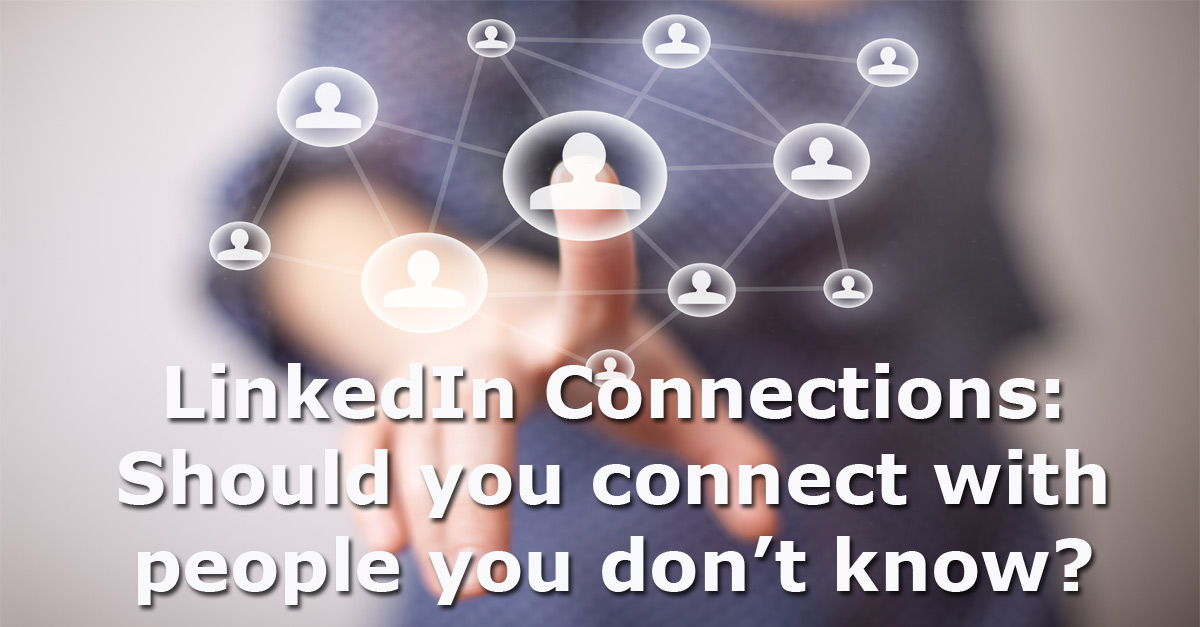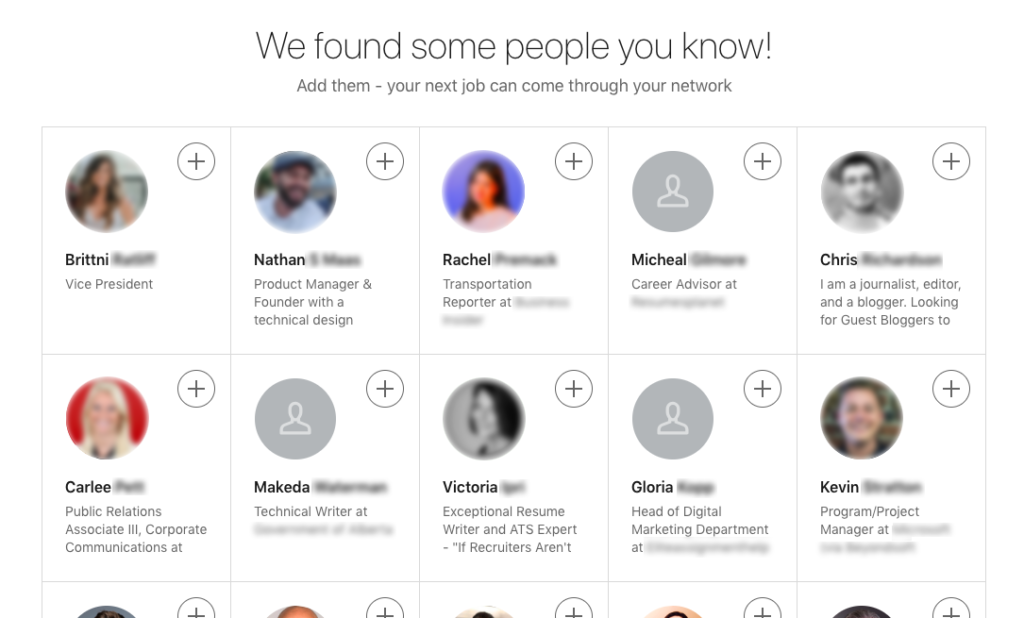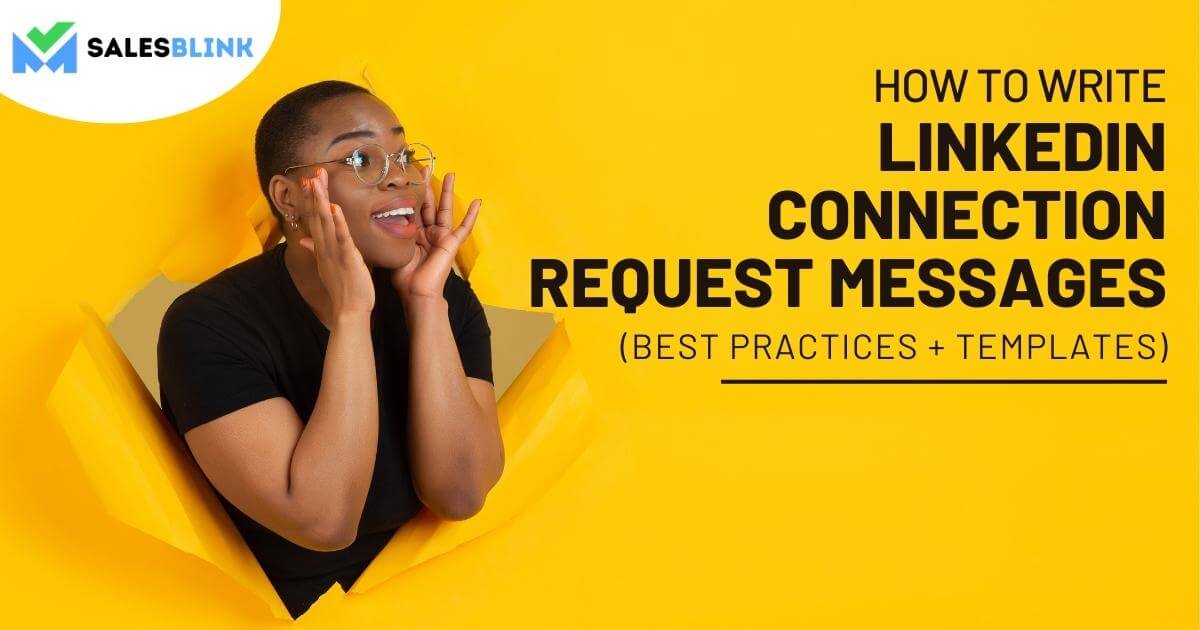Connecting on LinkedIn can feel daunting, especially when reaching out to people you don’t know personally. However, building a strong professional network on this platform is essential for career growth and opportunities. In this post, we’ll explore best practices for making meaningful connections on LinkedIn, ensuring your outreach is effective and impactful. Let’s dive into why networking on
Understanding the Importance of LinkedIn Networking

In today’s digital age, LinkedIn has established itself as the go-to platform for professionals seeking to connect, share, and grow their networks. But why is networking on LinkedIn so crucial? Let’s break it down:
- Professional Opportunities: Many job openings are filled through referrals rather than traditional applications. A strong LinkedIn network can open doors to new job prospects and opportunities that may not be advertised publicly.
- Industry Insights: Connecting with industry leaders and peers allows you to stay updated on the latest trends, insights, and best practices. Engaging with your network can provide a wealth of knowledge that enhances your professional skills.
- Building Your Brand: Your LinkedIn profile is an extension of your personal brand. By connecting with others and sharing valuable content, you enhance your visibility and establish yourself as an expert in your field.
- Strengthening Relationships: Networking isn’t just about meeting new people; it’s also about nurturing existing relationships. LinkedIn offers a platform to maintain and strengthen your connections, leading to long-term professional relationships.
- Collaboration Opportunities: Engaging with a diverse range of professionals can lead to collaborations and partnerships that benefit all parties. Networking on LinkedIn can help you find like-minded individuals with complementary skills.
So, how do you make sure your networking efforts are effective? Here are a few pointers:
- Personalize Your Connection Requests: When reaching out to someone new, always include a personalized message explaining why you’d like to connect. Mention any mutual interests or connections to increase the likelihood of acceptance.
- Engage With Their Content: Before connecting, engage with their posts by liking, commenting, or sharing. This establishes rapport and shows that you’re genuinely interested in their work.
- Be Respectful and Professional: Always maintain a professional tone in your communications. Respect people’s time and privacy; if someone declines your connection request, don’t take it personally.
- Follow Up Thoughtfully: If your connection accepts your request, send a follow-up message thanking them. This can be an opportunity to introduce yourself or ask a relevant question that continues the conversation.
Networking on LinkedIn is not just about quantity but quality. It’s about building genuine relationships that can lead to mentorship, collaboration, and opportunities for growth. By understanding the importance of these connections and implementing best practices, you can leverage LinkedIn to advance your career and foster a vibrant professional network.
Also Read This: What Does 1st, 2nd, and 3rd Mean on LinkedIn? Understanding Connection Levels
3. Crafting a Professional Profile

Before you start reaching out to strangers on LinkedIn, it’s crucial to ensure your profile stands out. Think of your LinkedIn profile as your digital business card—first impressions matter! Here are some tips to help you craft a professional profile that attracts connections:
- Profile Picture: Choose a clear, professional photo where you look approachable and confident. Aim for a simple background and dress appropriately for your industry. Avoid selfies or casual images.
- Headline: Your headline is one of the first things people see. Instead of just listing your job title, consider adding keywords that highlight your skills or aspirations. For example, "Marketing Specialist | Passionate About Digital Strategy & Content Creation" tells people more about you.
- About Section: Use this section to tell your story! Highlight your career journey, skills, and what drives you. Keep it conversational and use bullet points for easy readability. Don’t forget to mention what you’re looking for, like networking or job opportunities.
- Experience: List your relevant work experience with clear, concise bullet points. Focus on achievements rather than just responsibilities. Use metrics when possible, such as “Increased sales by 20% within one year” to illustrate your impact.
- Skills & Endorsements: Be strategic about the skills you list. Include those that are in demand in your industry and ask connections for endorsements. Endorsements build credibility and show that others recognize your expertise.
- Recommendations: Actively seek out recommendations from colleagues and clients who can attest to your skills and character. These testimonials can be invaluable in assuring new connections of your professionalism.
- Custom URL: Customize your LinkedIn profile URL to make it more memorable. For example, you could change it to linkedin.com/in/YourName. This makes it easier to share your profile.
Essentially, a polished and professional profile is your foundational tool for connecting on LinkedIn. Take the time to ensure it reflects who you are and what you’re aiming to achieve in your professional journey!
Also Read This: How to View a LinkedIn Profile Anonymously: Tips for Private Browsing
4. Researching the Person You Want to Connect With

Now that your profile is in tip-top shape, it’s time to turn your attention to the individuals you’re interested in connecting with. Researching potential connections is not just polite; it significantly increases the chances of your connection request being accepted. Here’s how you can effectively research those profiles:
- Check Their Profile: Start by reviewing their LinkedIn profile thoroughly. Look for their current role, past experiences, and any common connections or interests. This serves as valuable conversation starters when you reach out.
- Industry Insights: Understand the industry they work in. Reading recent articles or news related to their field can help you engage in informed conversations and demonstrate your interest.
- Shared Connections: Look at any connections you both share. If you have mutual connections, mention them in your connection request. Having a mutual connection can provide a sense of trust and credibility.
- Engage with Their Content: If they post updates, articles, or share insights, take some time to engage with their content by liking or commenting. This not only shows interest but puts you on their radar before you send a connection request.
- Common Interests or Background: Look into their education, volunteer experiences, or interests mentioned on their profile. Finding a commonality can make your connection request more personal and compelling.
- Goals and Aspirations: Sometimes, professionals share their career goals on LinkedIn. If possible, frame your connection around how you could support them in achieving these goals, whether it's through sharing resources or advice.
In short, thorough research lays the groundwork for meaningful connections. When you tailor your approach based on what you find, it demonstrates genuine interest and respect for the other person’s professional journey. Happy connecting!
Also Read This: How to Delete Someone from LinkedIn: A Simple Process for Managing Connections
5. Writing a Personalized Connection Request

When it comes to connecting with people on LinkedIn, a generic connection request just won’t cut it. Instead, take the time to write a personalized connection request that stands out and makes a lasting impression. Here’s how to do it effectively:
- Start with a Friendly Greeting: Use their name! A simple “Hi [Name]” shows you’re sincere and makes your message more personal.
- Explain Why You Want to Connect: Don’t just say you want to connect because you have mutual contacts. Mention a specific reason, such as “I noticed we’re both part of the Digital Marketing group and I’d love to hear your insights on the latest trends.” This makes your request feel intentional.
- Share a Common Interest or Experience: Reference something you both have in common. Perhaps you attended the same conference or have similar career goals. Tying your request to a shared experience can create a bond right off the bat.
- Keep It Concise: While it’s great to personalize, keep your message brief. Aim for a few sentences that capture your intention without overwhelming the recipient.
- Close with Inviting Tone: End your request with a friendly closing, such as “Looking forward to connecting!” This will leave a positive impression.
Here’s an example of how such a message could look:
Hi Sarah,
I came across your profile while researching best practices for LinkedIn marketing and noticed we’re both part of the Marketing Professional group. I admire your insights into social media strategy, and I would love to connect and exchange ideas!
Looking forward to connecting!
Best,
Tom
By crafting a personalized request, you not only increase the chances of your request being accepted but also lay the foundation for a meaningful professional relationship. Remember, a little effort goes a long way!
Also Read This: Should You Message a Recruiter on LinkedIn After Applying?
6. Follow-Up Strategies After Connecting
So, you've successfully connected with someone on LinkedIn—great job! But your work doesn’t stop there. To truly make the most of your new connection, follow-up strategies are essential. Here are some effective tips on how to keep the conversation going:
- Thank Them for Connecting: A simple thank-you message right after they accept your connection can go a long way. It shows appreciation and sets a positive tone for future interactions.
- Engage with Their Content: Start showing interest in their posts. Like, comment, or share their content to let them know you value their insights. This not only keeps you on their radar but also strengthens your connection.
- Send a Follow-Up Message: After a week or two, consider sending a follow-up message to keep the dialogue alive. You can reference an article they shared, ask a question about their industry, or suggest a virtual coffee chat. It doesn’t have to be formal—keep it light!
- Share Interesting Resources: If you come across articles, podcasts, or events that align with their interests, share them! This not only shows you’re thoughtful but also positions you as someone who contributes value.
- Ask for a Meeting: If appropriate, suggest a brief virtual coffee or phone chat. This step can solidify a connection and lead to mutual opportunities. Just be mindful of their time.
Remember, the goal of LinkedIn is to build authentic relationships that can benefit both parties. By implementing these follow-up strategies, you'll demonstrate that you’re not just another contact, but a valuable connection worth nurturing!
Also Read This: How to Turn On Private Mode on LinkedIn for Discreet Browsing
7. Common Mistakes to Avoid When Connecting
Navigating LinkedIn can be tricky, especially when you’re trying to connect with people you don’t know. To make sure your outreach is effective, here are some common pitfalls to avoid:
- Generic Connection Requests: Sending a bland request that simply says “I’d like to connect” isn’t going to inspire anyone to hit that accept button. Personalize your message!
- Skipping the Message: Not including a personalized note when sending a connection request is one of the biggest missed opportunities. Always take a moment to explain why you want to connect.
- Overly Salesy Approaches: Approaching someone with a hard sell right off the bat can be off-putting. Focus on building a relationship before pitching anything.
- Requesting Too Many Connections at Once: Sending out mass connection requests in a short span can flag your account for spam. Space out your requests and make them thoughtful.
- Neglecting Current Connections: While expanding your network is great, don’t forget to engage with those you’re already connected with! Show appreciation by commenting or liking their posts.
- Ignoring Follow-Up: After connecting, it’s essential to follow up. A simple thank you or a conversation starter can go a long way in establishing rapport.
- Not Keeping Your Profile Updated: Your LinkedIn profile should reflect your current skills and experiences. An outdated profile may deter potential connections.
By avoiding these common mistakes, you can foster more meaningful relationships on LinkedIn, making it easier to connect with new people while enhancing your professional image.
8. Conclusion
Connecting on LinkedIn with people you don’t know doesn’t have to be intimidating. In fact, when approached with the right strategies, it can open doors to numerous opportunities in your career. Remember, the goal is not simply to grow your number of connections but to foster genuine relationships that can lead to collaborations, mentorships, or new job opportunities.
As you venture into the world of LinkedIn networking, keep these points in mind:
- Be Genuine: Authenticity goes a long way in building trust.
- Invest Time: Quality connections require effort. Take your time to craft personalized messages and engage with content.
- Stay Professional: Maintain a professional tone in your interactions, even when they get casual.
- Don’t Be Discouraged: Not everyone will respond, and that’s okay! Keep trying, and don’t take it personally.
So, get out there and expand your network with confidence! By being strategic and a bit more personal in your approach, you’ll discover that making connections on LinkedIn can be not only rewarding but also enjoyable. Happy connecting!
 admin
admin








